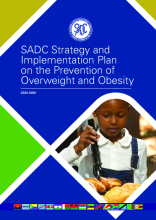Overweight and obesity, a multifaceted chronic condition with several contributing causes, including biological risk factors, socioeconomic status, health literacy and numerous environmental influences, have significantly increased globally over the past few decades. Within Southern Africa, prevalence of overweight and obesity doubled since 1990, reaching an estimated 37.5% among adult men and 58.2% among adult women in 2019 (1). Of particular concern within the Southern African context, children and adolescents experienced a 1.7-fold increase in prevalence between 1990 and 2019, affecting 14.7% of boys and 18.1% of girls aged 2 to 19 (1). This burden is escalating within a context where undernutrition and persistent micronutrient deficiencies continue to be prevalent, fostering the coexistence of various malnutrition burdens – the triple burden of malnutrition.
The implications of this upsurge are substantial, as childhood obesity heightens the likelihood of obesity in adulthood, thereby becoming a predisposing factor for over 200 diseases. These conditions encompass cardiovascular issues, hypertension, stroke, type-2 diabetes, and a range of cancers. Shockingly, in 2019, obesity contributed to 37% of deaths in the African region (2). Considering population growth and shifting age distributions with prevailing obesity trends, the economic impact of overweight and obesity in Africa alone is predicted to reach USD 50 billion per year by 2035 (3).

